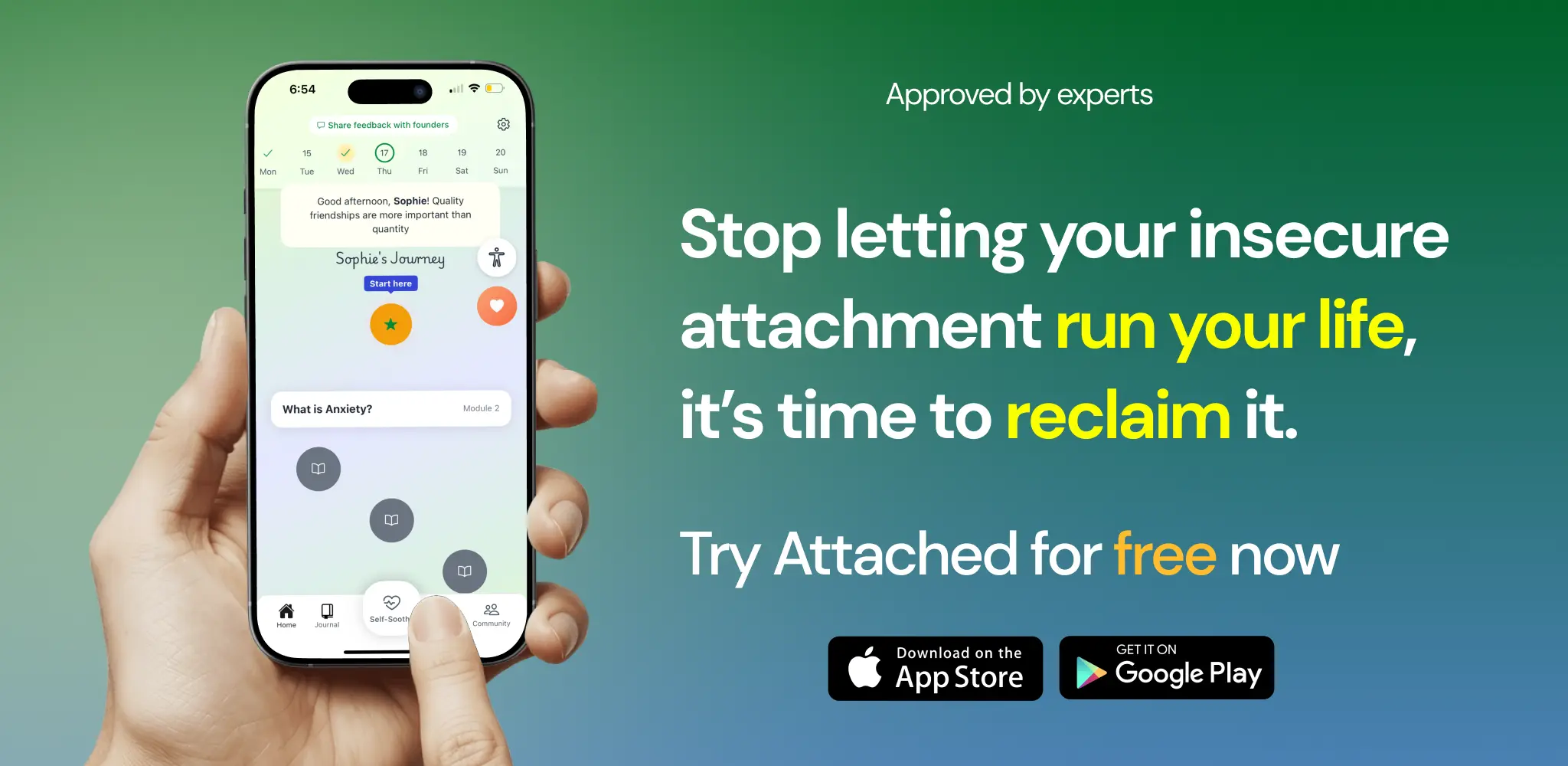Do Avoidants Ever Come Back? The Psychology for Why They Leave, Why They Return, and What It Really Means

They vanish like smoke... no closure, no explanation. But behind the silence, their nervous system is doing something strange: it's protecting them from the very connection they crave.
Your brain can't tell the difference between distance and danger.
That's why when an avoidant partner pulls away, your chest tightens like you're being abandoned all over again.
It feels personal. Rejection always does.
But in the world of attachment styles, something very different is happening.
Avoidants are not trying to hurt you.
They're protecting themselves, from the kind of closeness that once felt unsafe to them.
People with avoidant attachment style crave connection, but their nervous system confuses intimacy with entrapment.
Their feelings lean in.
Their body screams, Run.
The psychology behind why avoidants pull away
Avoidant attachment starts early. Usually in homes where emotions were inconvenient.
Parents might have been loving but distant. Physically present, but emotionally out of reach.
So the child learns:
Needing people gets you hurt.
Dr. Mary Ainsworth's Strange Situation experiment (1978) captured it perfectly.
When mothers left the room, avoidant infants looked calm, but heart monitors showed their stress spiked as high as the anxious kids. They just hid it better.
That's what your avoidant partner does now.
They withdraw to regulate their fear.
Distance becomes safety.
Do avoidants ever come back?
Yes. Often.
But rarely in the way you expect.
Avoidants come back when the danger, meaning you wanting them, fades.
When enough space makes their nervous system quiet again.
They might text, "Hey."
Or send a random meme.
It's their way of saying: I missed you... but I'm not ready to feel too much yet.
It's not that they don't care.
It's that caring too much feels like drowning.
The anxious–avoidant cycle
If you have an anxious attachment style, their distance triggers panic. You chase. They retreat.
That's the anxious-avoidant cycle, two nervous systems pushing and pulling around love and fear.
When you finally stop chasing, something strange happens.
The space they asked for stops feeling good.
Research by Fraley & Shaver (2000) on deactivation strategies found that avoidant adults often long for ex-partners after separation, but only once they believe the relationship is safely over.
Distance makes them miss what intimacy once threatened.
Cruel symmetry:
You heal by detaching.
They reconnect by feeling your absence.
Why avoidants return and what it means
Avoidants often come back out of nostalgia, not readiness.
They remember the stability you offered. The emotional care they couldn't accept at the time.
But if nothing has changed: if therapy, awareness, or emotional work hasn't happened, the same push-pull pattern repeats.
That's why attachment healing must happen in both directions.
The anxious partner learns to self-soothe.
The avoidant learns to stay, even when closeness feels suffocating.
Therapists call this co-regulation: two nervous systems learning safety through presence, not avoidance.
It's what every attachment app, workshop, and book tries to teach in different language: how to stay connected through discomfort instead of escape.
If you're the one left behind
Don't chase their silence.
Sit with your ache. That ache is information, your body showing you where love once felt conditional.
Let it hurt. Then let it open you.
The avoidant may come back. They often do.
But the real healing starts when you stop waiting for their return to feel whole.
Because sometimes, the comeback you need most isn't theirs.
It's your own.
The app that stays with you when avoidants pull away.
Love shouldn't be painful. The No.1 app to soothe your anxious attachment style so you can become happy and free — backed by attachment science.
The Attached app helps make this process easier with:
- Daily exercises for habit-building
- Self-Soothe Mode for tough emotional moments
- Journal to find hidden emotional patterns
- Weekly insights from Eden, your relationship guide
Download Attached for free and start working toward secure attachment.
Sources
- Ainsworth, M. D. S., et al. (1978). Patterns of Attachment. Hillsdale, NJ: Erlbaum.
- Fraley, R. C., & Shaver, P. R. (2000). Adult romantic attachment: Theoretical developments, emerging controversies, and unanswered questions. Review of General Psychology.
- Levine, A., & Heller, R. (2010). Attached: The New Science of Adult Attachment.
- Tatkin, S. (2012). Wired for Love.
- Amir Levine, TEDx Talk: The Science of Adult Attachment.

